Famines have been a devastating part of human history for centuries, taking millions of lives and leaving behind tales of suffering and despair. While some of these famines have been caused by natural disasters, others have been the result of human error, such as war, political mismanagement, overpopulation, and poverty. Here we look at 10 of the deadliest famines in history.
10- Ireland Famine
Deaths: 1 Million
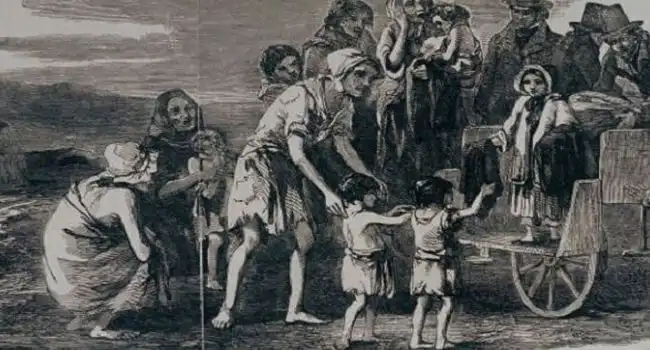
Photo Credit: Devastating Disasters
The Irish Famine of 1845-1852 is one of the most catastrophic events in Irish history, and one of the deadliest famines in human history. The famine was caused by a potato blight that decimated the potato crop, the staple food of Ireland’s poor. The famine was so severe that it caused a mass exodus of Irish people, with an estimated two million leaving the island in the years between 1845 and 1852.
The potato blight, known as Phytophthora infestans, is a fungus-like organism that is responsible for the destruction of potato crops throughout the world. The blight was first seen in Ireland in 1845 and spread rapidly throughout the country. The potato crop was so important to the Irish people, that it is estimated that over one million people died of starvation, and related diseases.
The effects of the famine were devastating for both Ireland and the Irish people. The population of Ireland decreased drastically, with the number of people living in Ireland falling from 8 million in 1845 to 6 million in 1852. This dramatic decrease in population came as a result of people dying from hunger, disease, and emigration.
9- Persian Famine
Deaths : 2 Million
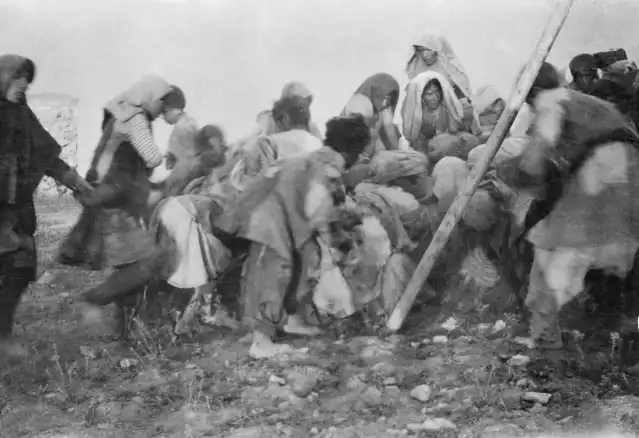
The Persian famine of 1917 was an extreme famine that occurred during World War I. It was one of the deadliest famines of modern history, with reports of up to two million deaths in Persia (now Iran).
The famine was caused by a combination of factors, including a long period of drought, a lack of food imports from abroad, and the disruption of transportation caused by World War I. The Persian government did try to alleviate the suffering of its people but was hampered by a series of natural disasters and political turmoil.
The drought was the primary cause of the famine. It began in 1915 and lasted until 1917. During this period, the country experienced a severe shortage of rainfall. This, combined with a lack of irrigation and the destruction of crops due to the war, caused a drastic drop in food production.
The country was also cut off from food imports due to the war. The British and Russian forces, who occupied the country during the war, had imposed a blockade on imports. This meant that food prices skyrocketed and the country was unable to import food from other nations.
8- North Korean Famine
Deaths : 3 Million
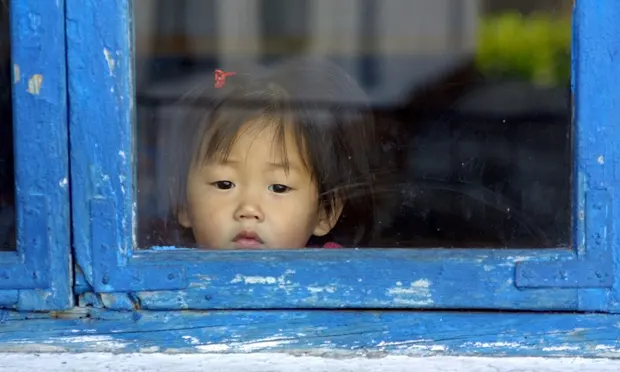
The North Korean famine of the late 1990s, also known as the ‘Arduous March’, was one of the worst humanitarian disasters of the 20th century. It is estimated that up to three million people died as a result of the famine, and many more suffered from malnutrition and disease.
The famine was caused by a combination of natural disasters, economic mismanagement, and a lack of foreign aid. The North Korean government’s collectivization policies, which had been in place since the 1970s, had already weakened agricultural production. This was exacerbated by a series of floods and droughts in the mid-1990s that decimated the country’s agricultural crops.
At the same time, the government’s economic policies had caused a severe economic crisis, leading to a drastic reduction in imports of food and essential goods. This, combined with the lack of foreign aid, caused food shortages and serious malnutrition in the population. The situation was further aggravated by the government’s refusal to accept foreign aid, or even to admit that a famine was taking place.
7- Ukrainian Famine
Deaths : 4 Million
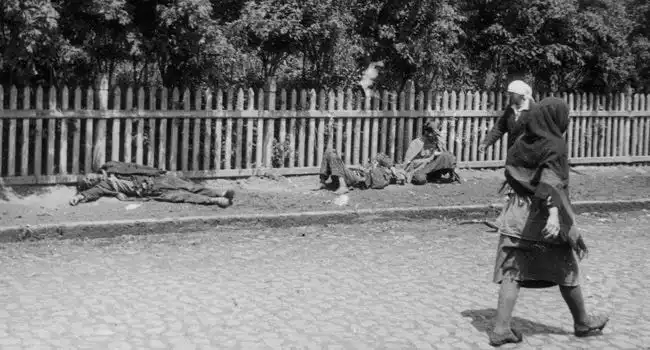
Photo Credit: WSWS
The Ukrainian famine of 1932-33, also known as the Holodomor, was a man-made famine caused by the Soviet government’s policies of forced collectivization and grain requisitioning. The famine killed an estimated four million Ukrainians, making it one of the deadliest famines in human history.
The famine began when the Soviet Union implemented a policy of forced collectivization, requiring Ukrainians to join collective farms and give up their private plots of land. This created a great deal of resentment among Ukrainian farmers, who had worked the land for generations and now were suddenly required to give up their autonomy.
In addition to collectivization, the Soviet government implemented a policy of grain requisitioning in the Ukrainian countryside. This meant that all grain produced by the collective farms was taken by the Soviet government, leaving nothing for the farmers. This policy was especially damaging in Ukraine, where the soil is not as fertile as in other parts of the Soviet Union.
The combination of collectivization and grain requisitioning caused a devastating famine in Ukraine. People were forced to scavenge for food, and many resorted to eating grass and tree bark to survive. The famine caused an estimated four to eight million deaths, making it one of the deadliest disasters in human history.
6- Great Bengal Famine
Deaths : 5 Million
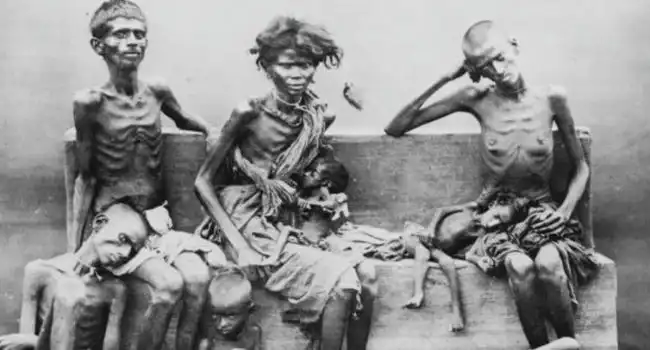
Photo Credit: Devastating Disasters
The Great Bengal Famine of 1943 was one of the worst famines in history and affected the Indian subcontinent, particularly the Bengal region in present-day Bangladesh and West Bengal. It was caused by a combination of factors, including crop failure, wartime disruption of transport, and government policies. The famine resulted in the death of an estimated 5 million people and left millions more suffering from malnutrition and disease.
The famine was made worse by the fact that the British government, which was then in control of India, failed to respond adequately to the crisis. In particular, the government’s decision to ship food from Bengal to other parts of the British Empire was particularly controversial. Specifically, Winston Churchill, who was Prime Minister of the United Kingdom at the time, ordered that food supplies be sent to Europe, rather than to India, despite the famine in Bengal. As a result, food prices in Bengal skyrocketed.
5- Russian Famine
Deaths : 5 Million
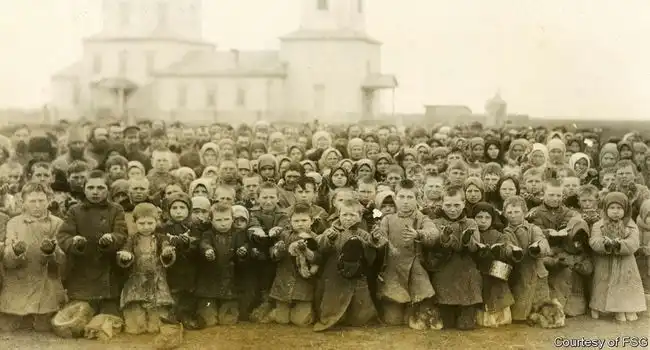
The Russian Famine of 1921 was one of the greatest famines of the 20th century. It affected a large part of the Soviet Union, leaving millions of people dead and many more displaced. The famine was caused by a number of factors, including the civil war that had been ongoing since 1917, a drought that affected the agricultural production in the region, and the policies of the new Soviet government.
The civil war had a huge impact on the Russian economy, as large parts of the population were killed or displaced, disrupting the agricultural production of the region. The Soviet government, which had taken power after the October Revolution, was also implementing some policies that had a negative impact on the economy, such as nationalizing industry and collectivizing agriculture. This had a devastating effect on the agricultural production of the region, as farmers were not able to produce enough food to meet the needs of the population.
The drought that affected the region in 1921 was the final blow, and it caused the harvest of that year to be severely reduced, leading to a drastic decrease in food production. This led to a massive famine, as the people of the Soviet Union did not have enough food to meet their needs.
4- Bengal Famine
Deaths : 10 Million
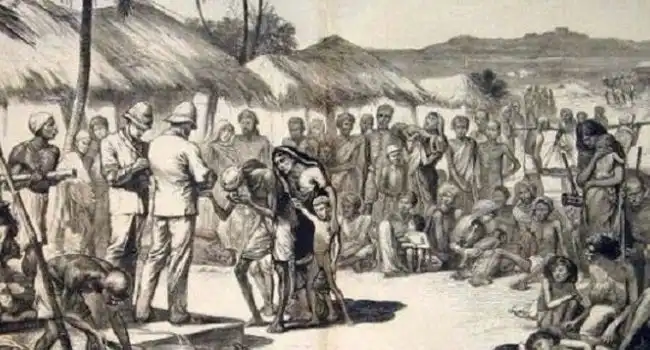
The Bengal famine of 1770, also known as the Great Bengal Famine, was a period of mass starvation and death in India’s Bengal region during the 18th century. It is estimated that the population of Bengal was reduced by one third due to the famine, with up to 10 million people dying from starvation and disease. The famine was caused by a combination of several factors, including a severe drought, crop failure, and political mismanagement.
The famine started in the winter of 1769 and lasted until the summer of 1773. It began as a result of a severe drought that affected the Bengal region and caused crop failure, leading to food shortages. The drought was especially severe in Bengal’s rural areas, where most of the population lived, and where agricultural production was already low. In addition to the drought, the region was also affected by an infestation of locusts, which further damaged the crops.
The famine was exacerbated by a number of political mismanagement problems, including corruption and exploitation by British officials, and a lack of government assistance for those affected. The British had a monopoly on the sale of grain and other food items, and they took advantage of this to increase their profits. In addition, the British imposed high taxes on the population, which further depleted their resources and made it difficult for them to purchase food.
3- Chalisa Famine
Deaths : 11 Million
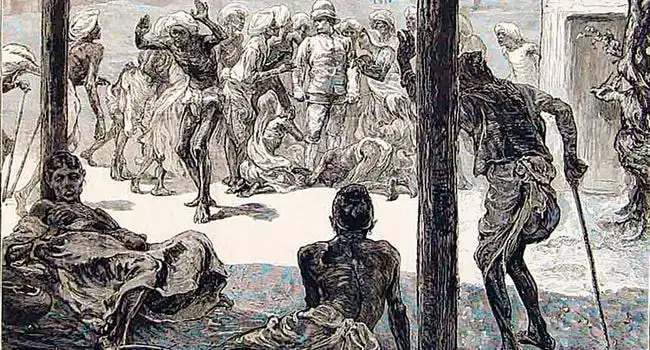
The Chalisa Famine of the early 20th century was one of the most devastating and longest-lasting famines in recorded history. It affected an estimated 15 million people in what is now northern India and Pakistan, lasting from 1899 to 1905. The famine was caused by a combination of natural and human factors, including drought, population growth, agricultural mismanagement, and inadequate relief efforts.
The drought began in the spring of 1899 and lasted until the beginning of the monsoon season in 1905. In the first year, the region experienced severe water shortages, resulting in crop failure and the death of livestock. This led to a rapid decline in food production, with crops failing to mature in the dry soil. Over the next several years, the drought worsened and the region experienced high temperatures and little rainfall. This caused further crop failure and the deterioration of agricultural land, resulting in famine.
The population of the region had grown rapidly in the preceding decades, leading to overpopulation and increased pressure on the land. This, combined with the drought and crop failure, meant that food supplies were inadequate to meet the needs of the population. In addition, agricultural mismanagement and a lack of irrigation infrastructure further exacerbated the situation.
2- Chinese Famine
Deaths : 22 Million
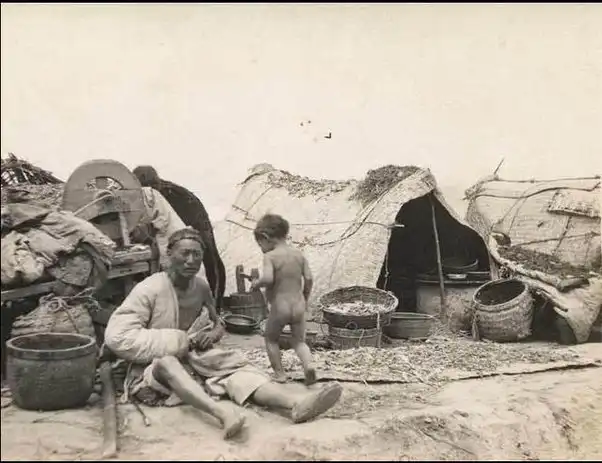
In the early 20th century, the Chinese people faced one of their greatest tragedies: the Great Chinese Famine of 1907-1908. During this time, an estimated 22 million people perished due to a combination of floods, droughts, and economic mismanagement. This famine was one of the worst in history and had a lasting impact on China’s society and economy.
The Great Chinese Famine began in 1907 with a drought in the Henan province. This drought was followed by a series of floods in various parts of the country, which resulted in a decrease in crop production. As the famine spread throughout China, the government was unable to adequately respond. This was in part due to the country’s weak economic infrastructure, which was unable to handle the influx of refugees and the food shortages that followed.
The government took some steps to alleviate the famine, but they were largely unsuccessful. They opened soup kitchens to provide free food to the hungry, but this was not enough to combat the famine. In addition, the government was unable to control prices, meaning that food prices rose rapidly and made it impossible for many people to purchase food.
1- Great Chinese Famine
Deaths : 40 Million
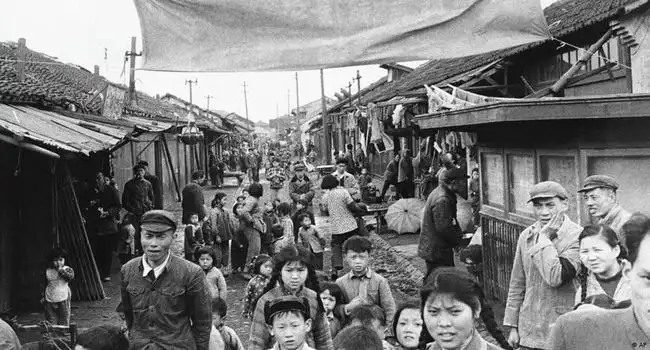
Photo Credit: DW
The Chinese Famine of 1959-1961 was one of the greatest famines in history. It affected an estimated 30-40 million people – and even caused some to resort to cannibalism. The famine occurred in the wake of the Great Leap Forward, an ambitious campaign initiated by Mao Zedong to rapidly modernize China.
The Great Leap Forward was a series of economic and social reforms with the aim of transforming China from an agrarian to an industrialized society within a few years. It included the collectivization of farms, the consolidation of small plots of land into large communes, and the introduction of new agricultural techniques.
Unfortunately, the Great Leap Forward was a disaster. As the communes became more efficient, the output of food decreased. This was partly due to a lack of incentives for farmers to produce more. It was also due to a misguided belief in the idea of a “steel furnace in every backyard” – which diverted resources away from food production and into the production of inferior steel.
The result was a drastic decline in crop production, leading to a massive shortage of food. This, combined with a series of natural disasters, created the conditions for the Chinese famine. The famine affected large areas of the country, particularly in the provinces of Sichuan, Henan and Anhui.


